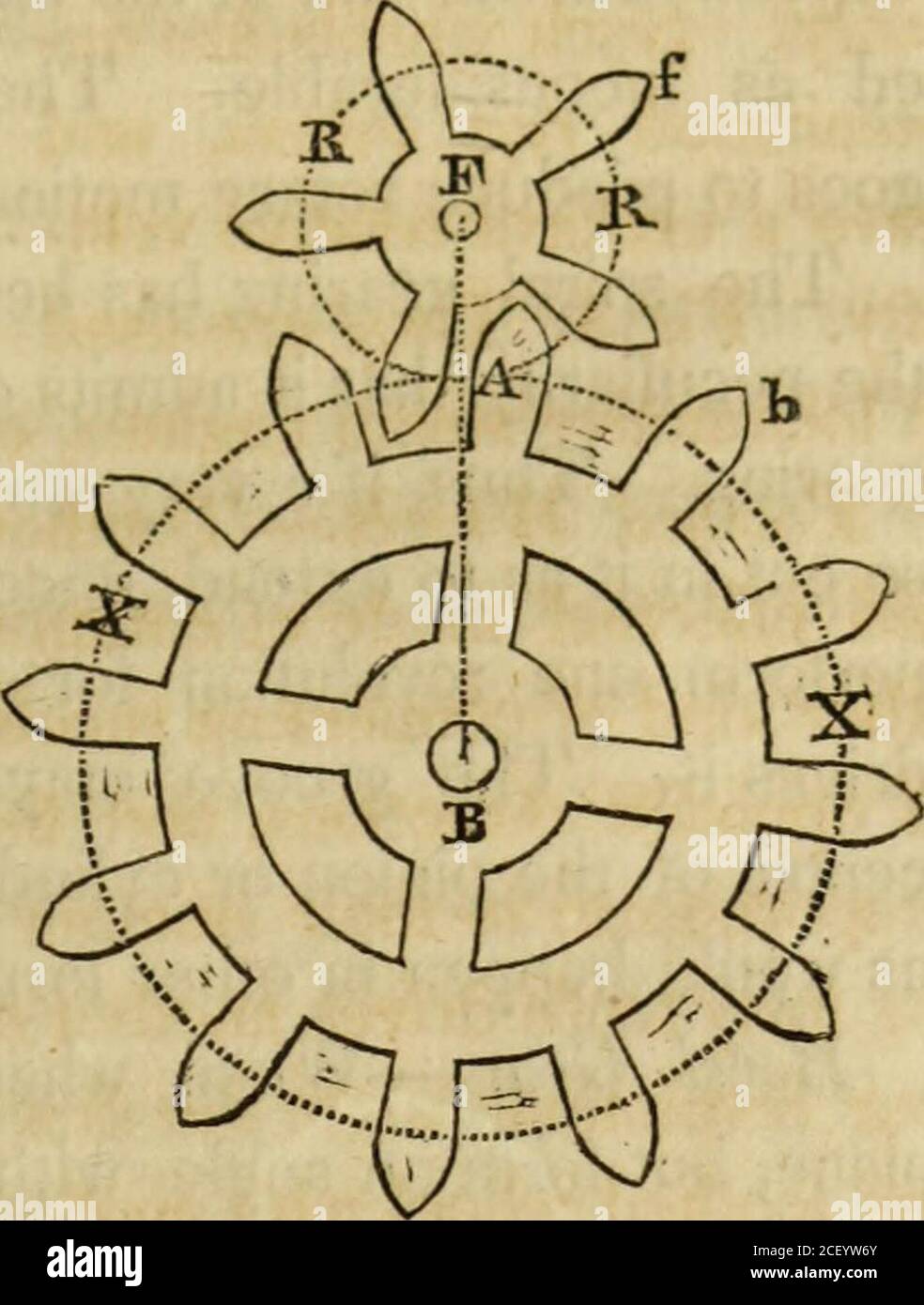. Elements of technology :. F A, the primitive radius of thepinion ; while the lines or dis-tances F f and B b, are called thetrue radii. The circles X AXand R A R are called the prim-itive circumferences, and by workmen, the pitch lines. Friction, to a certain extent, cannot be avoided, in teeth ofthe common kind, whose acting faces are at right angles w^iththe plane of the w^heels to which they belong. It may, howev-er, be much diminished, by making the teeth as small and asnumerous, as is consistent with their strength; for the quantityof friction necessarily increases with the distance of

Image details
Contributor:
Reading Room 2020 / Alamy Stock PhotoImage ID:
2CEYW6YFile size:
7.1 MB (218.9 KB Compressed download)Releases:
Model - no | Property - noDo I need a release?Dimensions:
1375 x 1816 px | 23.3 x 30.8 cm | 9.2 x 12.1 inches | 150dpiMore information:
This image is a public domain image, which means either that copyright has expired in the image or the copyright holder has waived their copyright. Alamy charges you a fee for access to the high resolution copy of the image.
This image could have imperfections as it’s either historical or reportage.
. Elements of technology :. F A, the primitive radius of thepinion ; while the lines or dis-tances F f and B b, are called thetrue radii. The circles X AXand R A R are called the prim-itive circumferences, and by workmen, the pitch lines. Friction, to a certain extent, cannot be avoided, in teeth ofthe common kind, whose acting faces are at right angles w^iththe plane of the w^heels to which they belong. It may, howev-er, be much diminished, by making the teeth as small and asnumerous, as is consistent with their strength; for the quantityof friction necessarily increases with the distance of the pointof contact from the line of centres. Spiral Gear.—In common cases, the teeth of wheels arecut across the circumference, in a direction parallel to the axis.In the spiral gear, now much used in cotton mills, in this coun-try, the teeth are cut obliquely, so that if continued they wouldpass round the axis like the threads of a screw. In conse-quence of this disposition, the teeth come in contact only in the Fig. 4.. * Called the proportional radius by Buchanan. ELEMENTS OF MACHINERY. lineof centres, and thus operate without friction. Fig. 5.Fig. 5. The action of these wheels, it is true, iscompounded of two forces, one of which acts inthe direction of the plane of the wheel, and theother in the direction of its axis. The latterforce occasions a degree of friction, which beingexpended at the end of the axle, may be regard-ed as inconsiderable. The remaining forcegoes to produce rotary motion. The spiral gearing has been apphed to clockwork, and hasthe peculiarity that it admits of a smaller pinion than any othergearing. Thus, if a very small cylinder have a spiral grooveso cut in it as to extend once round its circumference, it willperform one revolution for every tooth of the wheel whichdrives it. The groove may be cut indefinitely near to thecentre of the pinion or cylinder, without weakening it so muchas w^ould happen in other forms of the pinion. ^ Bevel Gear.—Whe